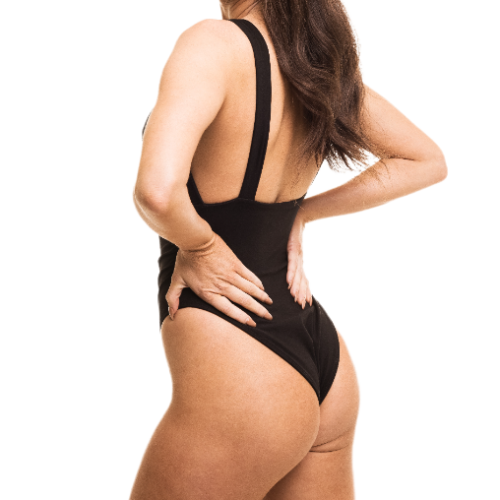Tumescent Liposuction
This is the most common procedure for liposuction. ‘Tumescent’ means ‘swollen’ and the procedure involves using a sterile solution to swell the fat cells, making them easier to identify and remove.
The solution used contains a mixture of saltwater, an anaesthetic (lidocaine) which swells the fat cells and a drug (epinephrine) that constricts the blood vessels and can significantly reduce bleeding.
It involves the following steps:
• The solution is injected into the area that needs to be treated.
• This causes the fat cells to swell up and become stiff.
• Your surgeon will then make a small incision into your skin and insert a small needle called a cannula.
• The cannula is connected to a vacuum that suctions out the fat from the targeted area.
Suction or Power-Assisted Liposuction (PAS)
Power or suction-assisted liposuction (SAL) is the oldest type of liposuction and involves using a mechanised cannula and moving it rapidly in a back-and-forth motion. This creates a vibration under the skin that helps to break down the fat tissues.
This form of surgery is often used to remove large volumes of fat. It is the cheapest form of surgical liposuction with a long history of success, however it can cause more pain and bleeding than other techniques.
Laser-Assisted Liposuction (LAL)
Laser is another technology used to assist in breaking up fatty tissue as part of a liposuction procedure.
Laser-assisted liposuction adds another step to the traditional liposuction process. Once the tumescent fluid has been administered into the treatment area, rather than immediately removing the unwanted fat with a suction cannula, a laser probe is first used to break down the fat so it can be more easily extracted.
The procedure involves the following steps:
• Your surgeon will insert tumescent fluid into the treatment area.
• They will then pass a laser fibre beneath the skin. This emits high-intensity laser beams which liquify the fat.
• Once the fat is liquified, a traditional suction cannula is used to remove it.
The laser-assisted method is more gentle than traditional liposuction, which usually means less bruising and swelling. Also, the heat generated from the laser can stimulate the skin to produce new collagen, which can result in some tightening and smoothing of the skin.
Ultrasound-Assisted Liposuction (UAL)
Ultrasound-assisted liposuction liquefies the fat in the same way as the laser-assisted technique, but does so with ultrasonic vibrations rather than with lasers.
Ultrasound-assisted liposuction – also known as ultrasonic liposuction – involves the following steps:
• Your surgeon will make small incisions in your skin and insert a cannula which is energised with low-frequency ultrasound.
• The ultrasonic vibrations burst the walls of the fat cells and emulsify the fat, making it easier to extract.
• The liquified fat is then removed through a traditional suction tube.
This method is often used for fibrous areas which might otherwise require an additional treatment – such as the back, flanks and saddlebags – and in areas where liposuction has been done before.
Some of benefits associated with UAL are reduced blood loss, swelling, and bruising; skin tightening; and ease of procedure for the surgeon. A larger volume of fat can be safely removed using this method, as the fat is liquified. It’s also a popular option when transferring fat to other parts of the body (e.g. the buttocks or breasts), as it safely collects the fat cells without damaging them.
However, ultrasound-assisted liposuction requires a slightly larger incision than other methods, in order to accommodate the ultrasound device. This could mean an increase in time and complexity. Although small, there is also the risk of burning, nerve damage, and scarring.
This method is commonly known under the brand name VASER – referred to as VASER liposuction.
